All about sorrel. Sowing, grooming, benefits and harm of sorrel.
Contents
- Sorrel: vitamins, use and harm
- When sowing seeds with sorrel in open ground?
- When to plant sorrel for the winter?
- When is it better to sow the seeds of sorrel: in spring or in autumn?
- Why did not the sorrel rise?
- How to care for sorrel?
- Why sorrel in the holes: what to do?
- Why are red spots on sorrel?
- How to feed sorrel in the spring?
- How to feed sorrel after cutting? Spinach and sorrel: what's the difference?
- VIDEO: How to grow sorrel?
Sorrel: vitamins, benefits and harm
The joy that winter is over can be replaced by chagrin if the body is tired of fighting the winter cold and is experiencing a spring lack of vitamins. In early spring, such a deficit can fill the young sorrel. If it grows in your garden - your feet themselves will carry you to the young leaves and you will not resist the temptation to rip sorrel and feel its sour taste. Your body will tell you that these leaves are extremely necessary for replenishing winter health losses.
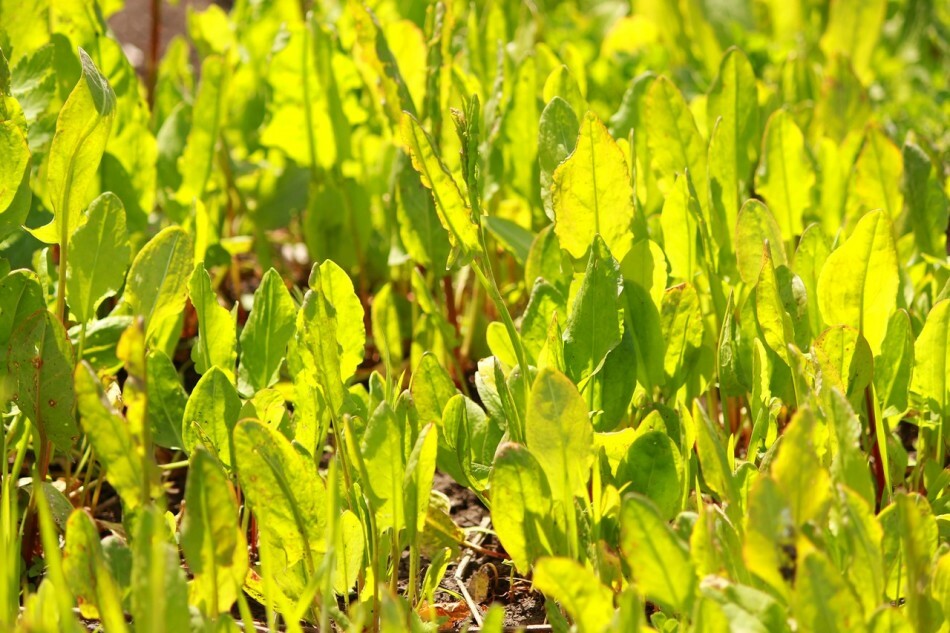 The temptation to which it is difficult to resist
The temptation to which it is difficult to resist What is the use of sorrel?
Sorrel leaves contain ascorbic acid, carotene, rutin, thiamine, oxalic acid and its salts, tannins, mineral salts. Sorrel is used for beriberi, to enhance appetite, it stimulates the work of the liver, regulates bile formation. What is sorrel bad for?
Sorrel contains a very large amount of oxalic acid. Linking in the body with calcium, it forms poorly water-soluble oxalic calcium. It falls out in the form of sediment or sand and thereby can promote the formation of kidney stones. Sorrel can be eaten without fear of those people who do not have a tendency to form oxalate stones in the kidneys.
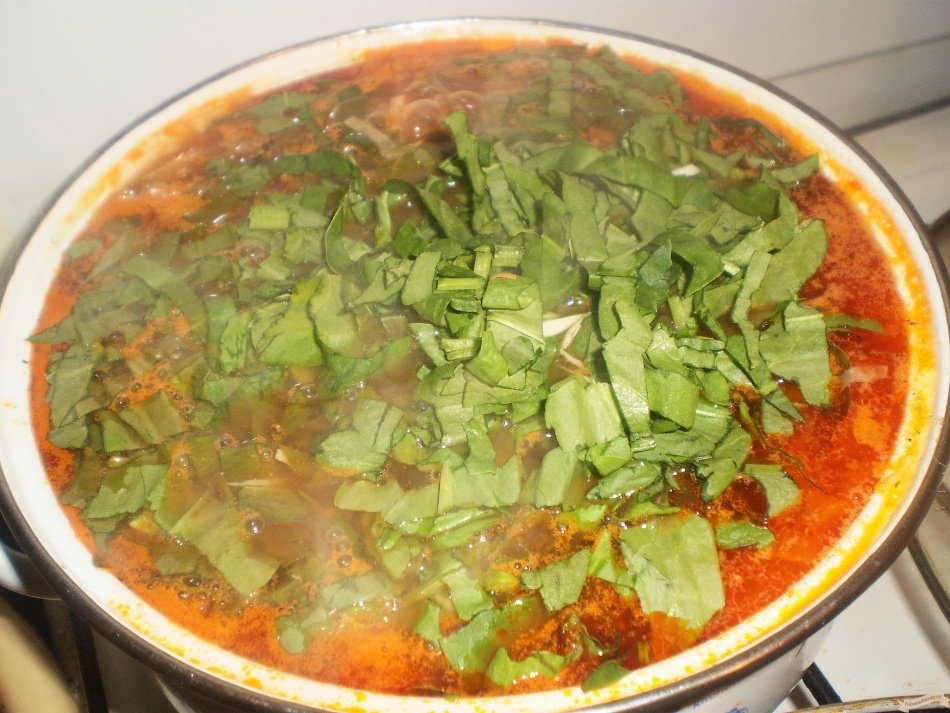 The perfect remedy for vitamin deficiency
The perfect remedy for vitamin deficiency When sowing seeds with sorrel in the open ground?
Sorrel is not afraid of frosts and it is possible to sow it in the spring in the open ground almost immediately after the snow comes down and the earth dries. The only caveat - it is not recommended to sow sorrel seeds too early in unprepared land. If you sow sorrel in a land that has not had time to warm up well and dry up, it can become heavy and stony from the fact that it was glued due to cultivation with a chopper.
 Do not hurry to sow very early - the land should be ready for this
Do not hurry to sow very early - the land should be ready for this When to plant sorrel for the winter?
It is necessary to plant the seeds of sorrel for winter after the onset of a stable cold weather. This is to ensure that the seeds do not go into growth. Usually such weather is established in the end of October - the beginning of November. Seeds are planted in prepared grooves, they are closed up finer than in spring planting and increase the number of seeds by approximately 1.5 times.
 How to sow sorrel
How to sow sorrel When is it better to sow the seeds with sorrel: in spring or in autumn?
Each of the ways of sowing has its pros and cons. So, if the sorrel is sown for the winter, you can get the earliest shoots of this plant. Seeds will start to germinate at the first warming up of the earth in the spring sun. Such seeds germinate already because they were moistened with thawed water in early spring. The downside of this method of sowing can be the germination of seeds during the thaw period, as well as the need to sow more seeds than when sowing in the spring.
In the spring sowing, the seeds do not lose their germination capacity, but they can germinate for a long time if they are sown in dry soil and after the sowing, there is not enough precipitation. You can also be late with the planting of sorrel, if the spring is long and the rains do not allow you to sow.
 Seeding method selection for you
Seeding method selection for you Why did not the sorrel come up?
There are several reasons why seedlings did not appear:
- Seeds that lost germination as a result of prolonged or incorrect storage were sown
- Seeds did not receive sufficient moisture
- Seeds were sown either too small or too deep
If you sowed seeds in the winter, the reasons for which the sorrel did not rise may be:
- Seeds lost their germination due to the fact that they were poured during the thaw
- The seeds were sown in loose soil, and after the autumn and spring rains they went too deepin the ground
Advice for those who want to make podzimnij crop:
Sow the seeds in not dug up the ground. In the area where the sorrel will be sown, make shallow grooves in the soil compacted after summer and sow the seeds, covering them by 3-5 mm. With this method of sowing the seeds will not go deep into the earth from the effects of precipitation
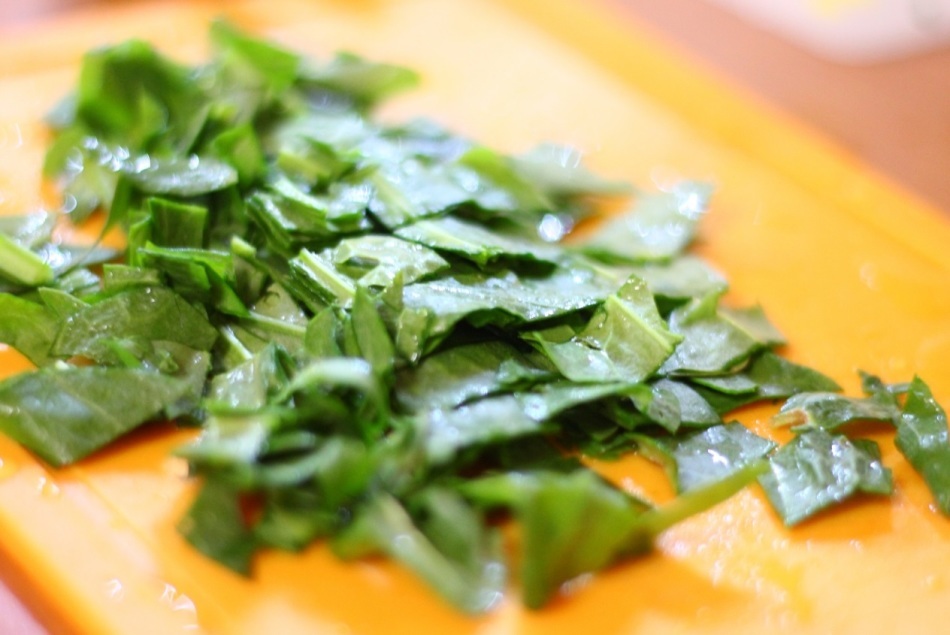 Borsch and pies with sorrel - tasty vitamin dishes
Borsch and pies with sorrel - tasty vitamin dishes How to care for sorrel?
Sorrel is quite unpretentious and grows even when the fact that he is in the garden mistress and completely forgotten. But a greater yield of leaves can be obtained with proper sowing and care of plants. Sow the sorrel in grooves to a depth of 1-1.5 cm. The distance between the rows is 20-30 cm. During growth, we fight with weeds, remove leaves damaged by pests or diseases. Sorrel is drought-resistant enough, but in arid summer periods it needs watering. The largest harvest can be obtained in the second or fourth year after planting. After this, you need to transfer the sorrel to another bed.
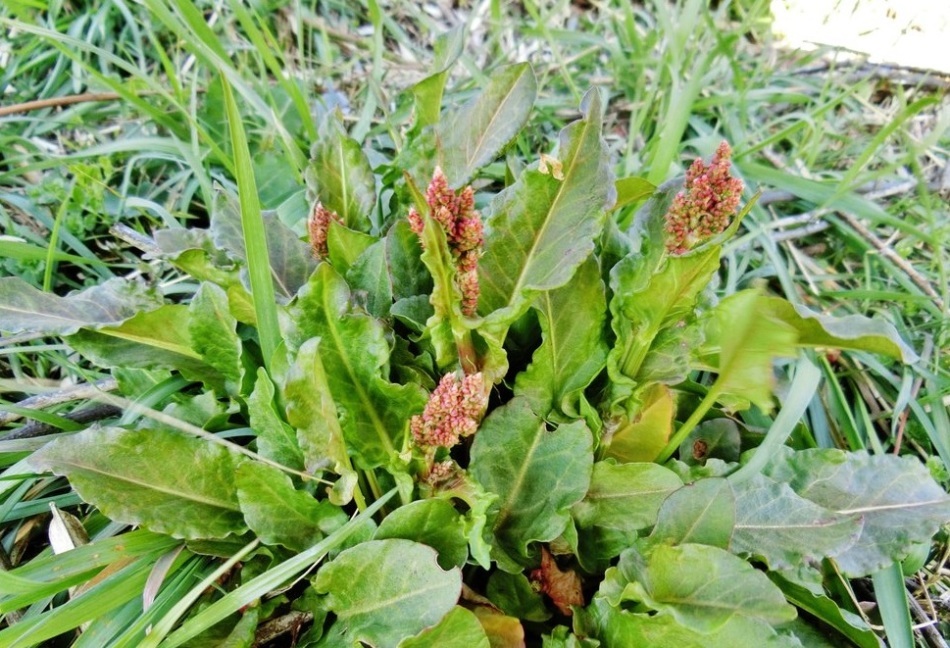 Sorrel can grow even in weeds, but loves care and care
Sorrel can grow even in weeds, but loves care and care Why sorrel in holes: what to do?
Caterpillars of the oxalic sawfly and leaf beetles can damage the leaves of the sorrel. If you deal with these pests with the help of chemicals, the question arises - if the leaves after such treatments poisoned the insects, can people use these leaves for food? Probably not. Therefore, if you decide to buy a bunch of sorrel in the market and saw that it is in holes - do not rush to move from bundles with holes to beautiful bundles, buy an environmentally friendly food.
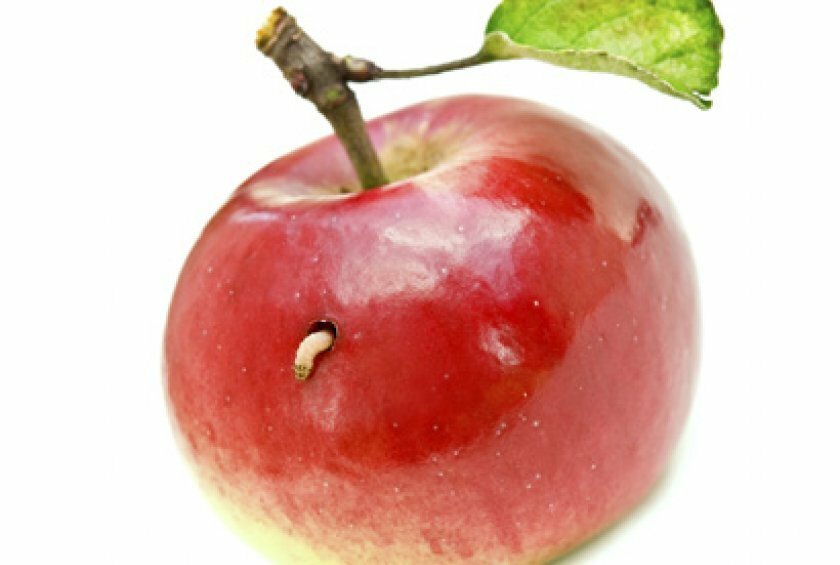 Worm vegetables and fruits - natural
Worm vegetables and fruits - natural The same can be said about wormy apples, pears, plums and other fruits. Such fruits are most useful because they did not undergo chemical treatment. The leaves of sorrel are badly damaged by insects in the summer and are almost not damaged in the spring. Therefore, it is reasonable to not spend any chemical preparations in the spring of processing sorrel at all.
An ecologically clean method of combating leaf-eating pests can be the daily pollination of leaves with wood ash for 4-5 days.
 If the sorrel in the holes means that it was not treated with chemical preparations.
If the sorrel in the holes means that it was not treated with chemical preparations. . Why are there red spots on the sorrel?
The appearance of red spots on sorrel is most likely due to the appearance on the leaves of pathogens of fungal diseases. The disease can be carried by wind or by mechanical means. Pathogens persist in the soil and on the remains of leaves. Combat this disease is recommended Bordeaux liquid or copper chloride. Both of these drugs can not be used if you are going to use leaves for food. If the sorrel is small, sick leaves need to be cut off and burned. If the damage to the leaves is massive, you can recommend the removal of the whole planting and sowing of sorrel on a piece of land where this culture did not grow earlier.
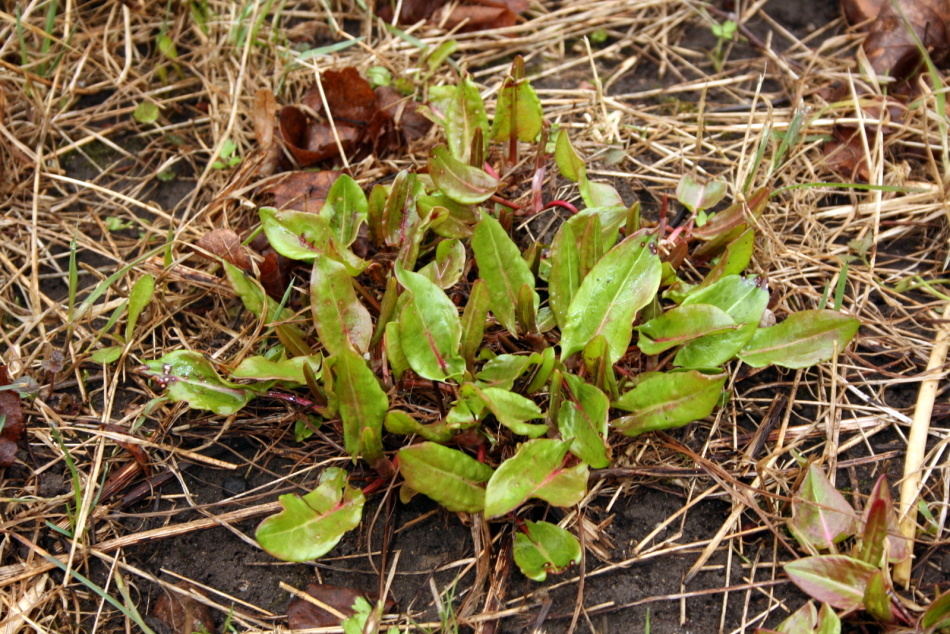 Reddish leaves of sorrel can be from spring frosts
Reddish leaves of sorrel can be from spring frosts How to feed sorrel in the spring?
All plants that are used in the form of spicy additives for food: dill, parsley, green onions and sorrel, including - record holders for the ability to accumulate in leaves nitrates, which enter the plant from the soil. And if your plants look healthy and grow well to feed them additionally with mineral fertilizers is not necessary. If the soil in your garden is poor and depleted, you can fertilize fertilizers. It is better to use humic fertilizers for this purpose. These fertilizers increase the productivity of garden crops, promote the growth of beneficial microorganisms in the soil, strengthen the root system of plants, improve soil characteristics and are considered safer than other complex fertilizers.
 If the garden with sorrel looks healthy - it can not be fed
If the garden with sorrel looks healthy - it can not be fed How to feed sorrel after cutting?
It is not recommended to cut the leaves of sorrel completely up to the roots. Such a cut can weaken the plant, and new leaves will grow for a long time. Cut the leaves at a height of 10 cm, and this will give a chance to young shoots that will quickly go into growth. Feed the plant can be a complex mineral fertilizer. Such fertilizers contain the basic nutrients essential to plants - nitrogen, phosphorus and potassium. Here are the names of these fertilizers:
- Ammophos
- Ammofosca
- Diammofosca
- Nitroammofoska
- Nitrofoska
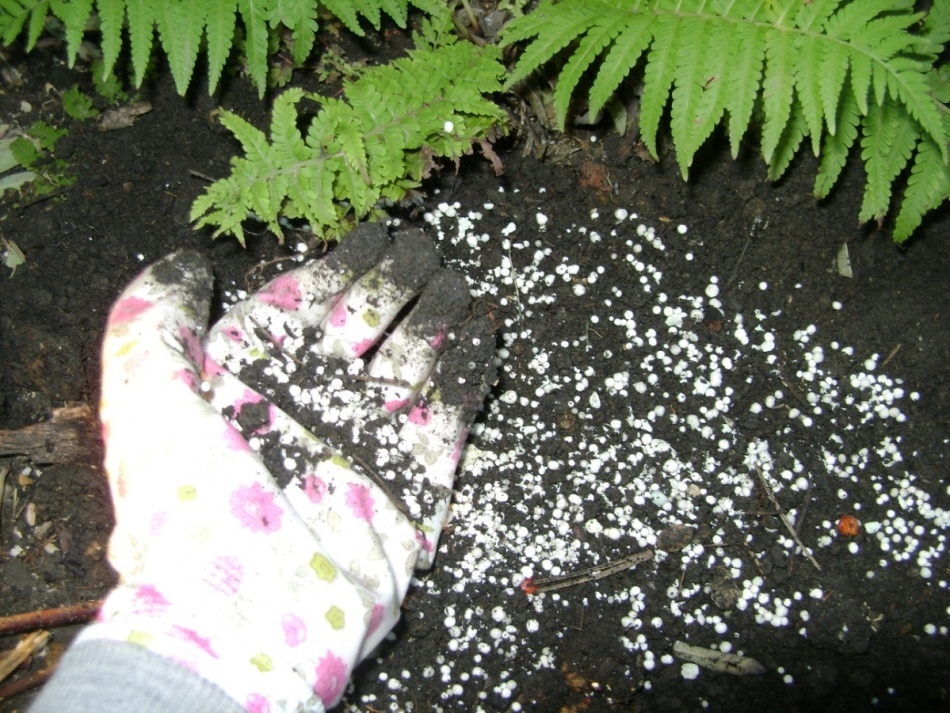 Use fertilizers according to the instructions of the preparation
Use fertilizers according to the instructions of the preparation Spinach and sorrel: what's the difference?
Spinach leaves are similar to sorrel leaves, but differ from it to taste. Sorrel has a pronounced sour taste, and spinach is tasteless. In spinach, there is no sourness, no bitterness or a pronounced flavor. The spinach leaves are more rounded and resemble small bugs. The leaves of sorrel, even if it is broad-leaved sorrel, are more elongated.
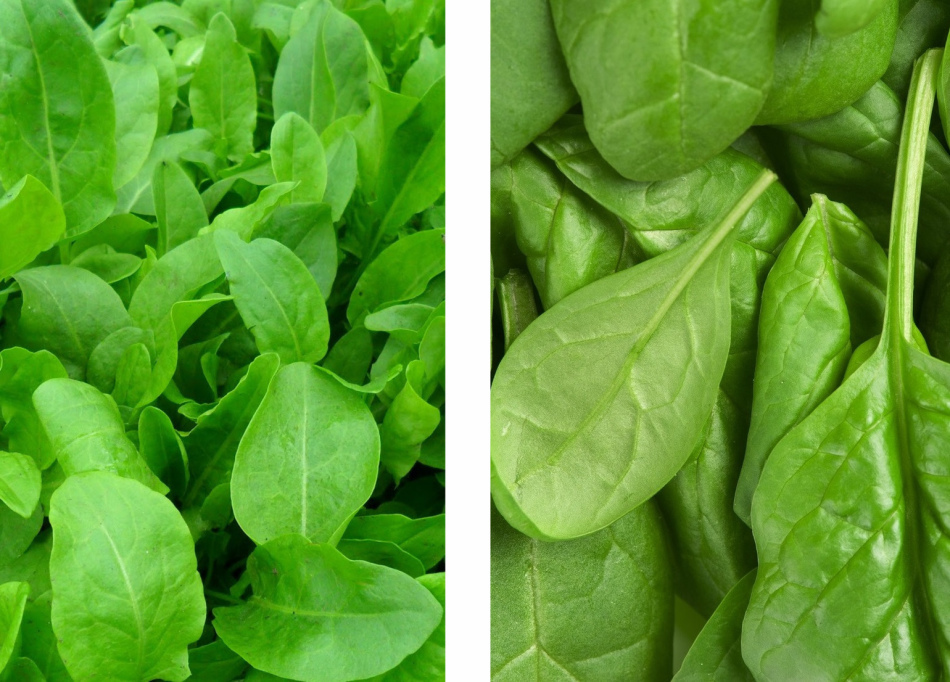 To the left, sorrel leaves, right spinach leaves
To the left, sorrel leaves, right spinach leaves 